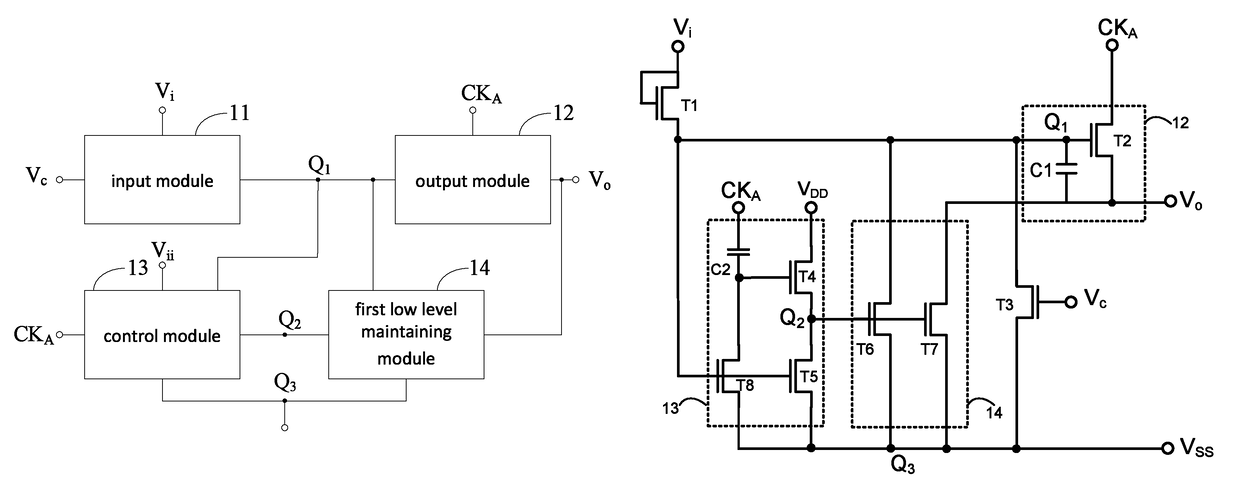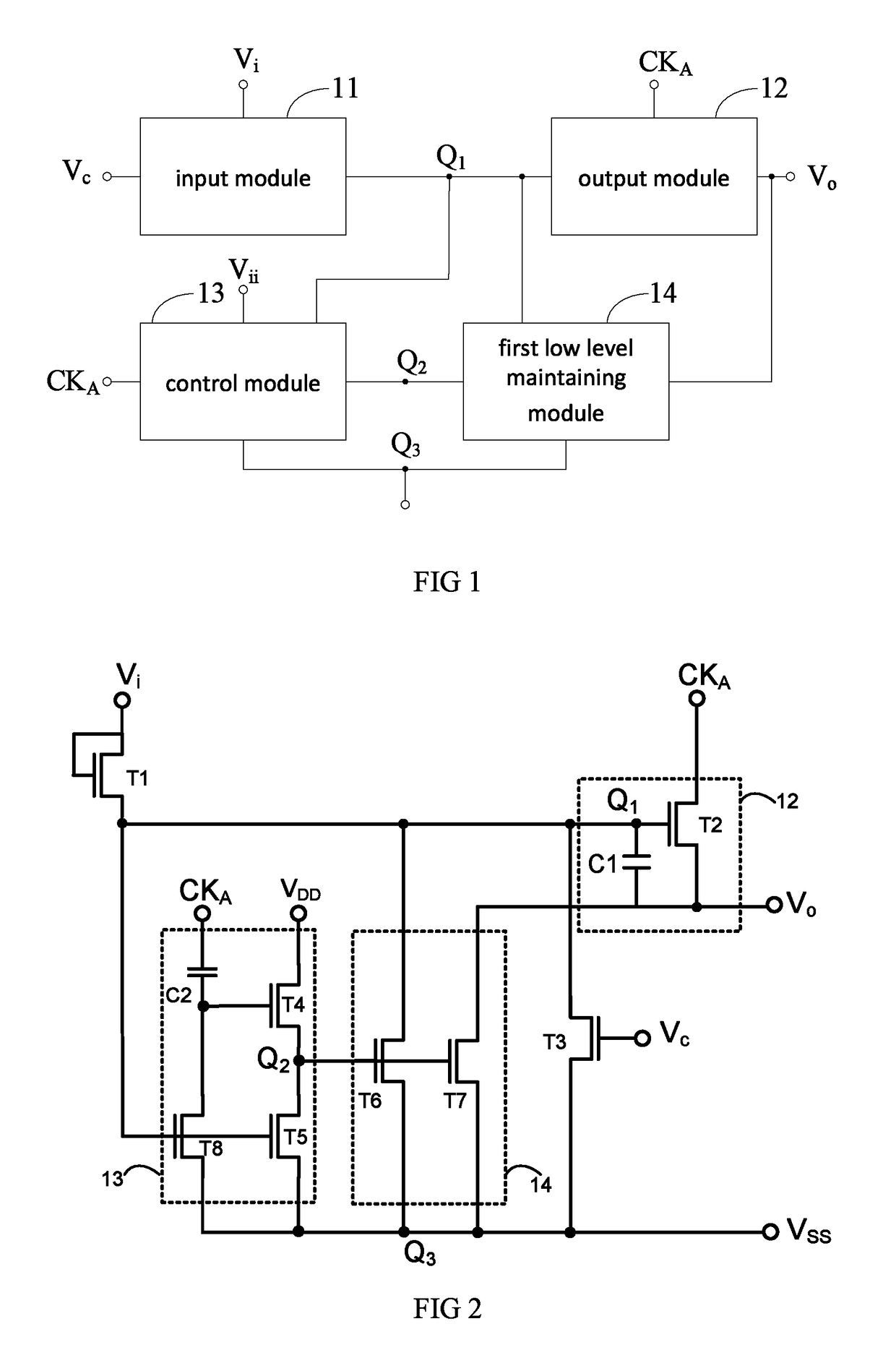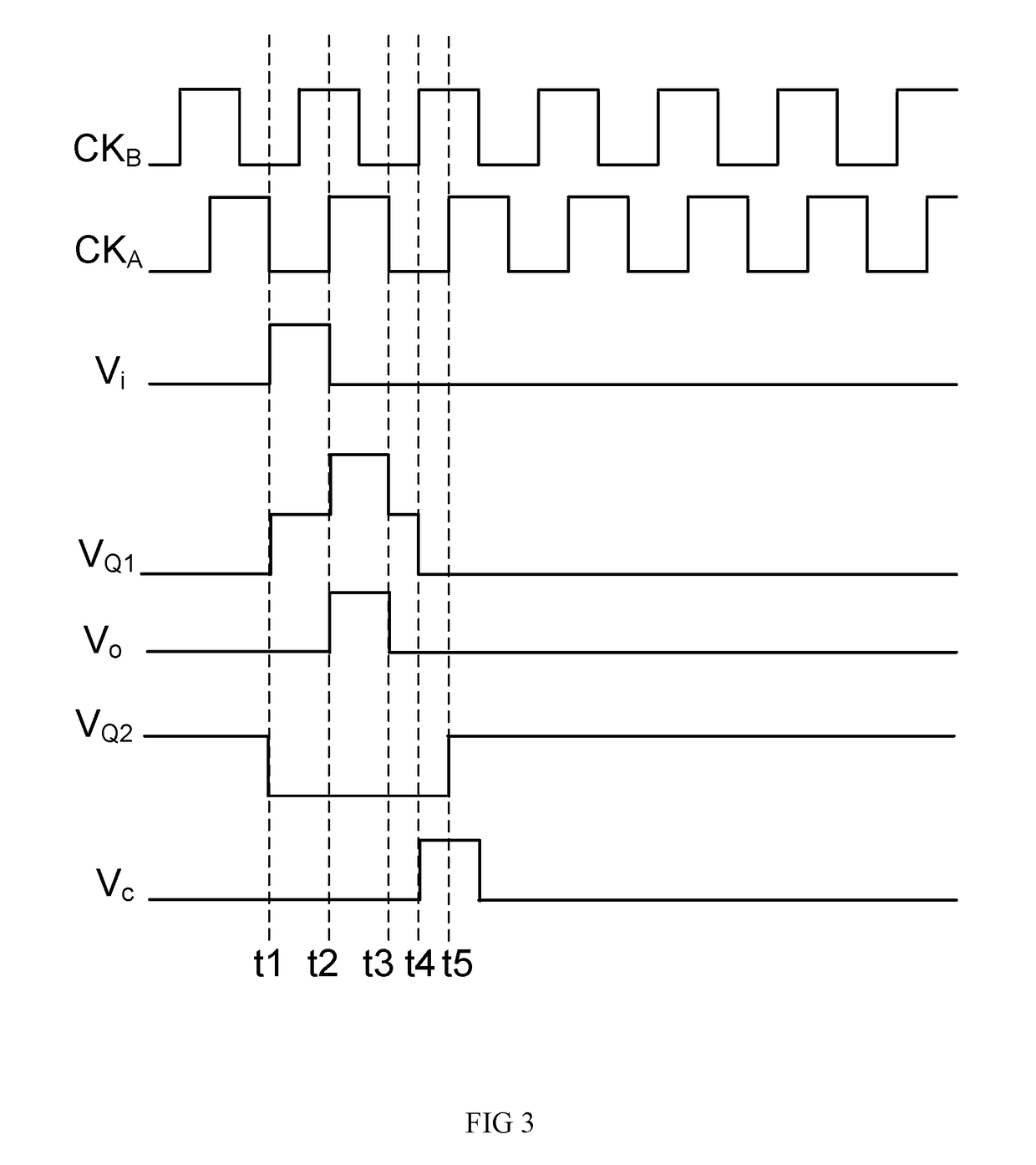Gate driving circuits and display devices
a driving circuit and display device technology, applied in the field of display technology, can solve the problems of mechanical and electrical reliability of the display device, higher cost, and more serious defects of high-resolution displays, so as to prevent the low-level maintaining module from causing electrical leakage and reduce the output delay of the gate strobe signal
- Summary
- Abstract
- Description
- Claims
- Application Information
AI Technical Summary
Benefits of technology
Problems solved by technology
Method used
Image
Examples
first embodiment
[0058]Referring to FIG. 2, the input module 11 includes a first transistor (T1) and a third transistor (T3), wherein a gate of the first transistor (T1) is short-connected with a first pole to be the pulse signals input end of the input module 11 for inputting the first pulse signals (Vi). A second pole of the first transistor (T1) and the first pole of the third transistor (T3) connect to the first control node (Q1). A second pole of the third transistor (T3) connects with the low level node (Q3). A gate of the third transistor (T3) operates as a first pull down control end of the input module 11 for inputting the first control signals (Vc).
[0059]The output module 12 includes a second transistor (T2) and a first capacitor (C1). A gate of the second transistor (T2) operates as a driving control end of the output module 12 connecting to the first control node (Q1). A first pole of the second transistor (T2) operates as the clock signal input end of the output module 12 for inputting ...
second embodiment
[0074]FIG. 5 is a circuit diagram of the gate driving unit in accordance with another embodiment. The difference between FIG. 5 and FIG. 2 resides in that, in this embodiment, the control module 13 further includes a fifteenth transistor (T15). A gate of the fifteenth transistor (T15) connects to the gate of the first transistor (T1), a first pole of the fifteenth transistor (T15) connects to the second control node (Q2), and the second pole of the fifteenth transistor (T15) connects to the low level node (Q3).
[0075]The gate of the fifteenth transistor (T15) is controlled by the first pulse signals (Vi). By configuring the fifteenth transistor (T15), at the moment t1, the fifteenth transistor (T15) is turned on by the high level control signals of the first pulse signals (Vi). In this way, the level (VQ2) of the second control node (Q2) is quickly pulled down to the low level (VL), which avoids the electrical leakage caused by the seventh transistor (T7) at the moment t1. Further, t...
third embodiment
[0077]FIG. 6 is a circuit diagram of the gate driving unit in accordance with another embodiment. The difference between FIG. 6 and FIG. 2 resides in that, in this embodiment, the control module 13 further includes a ninth transistor (T9) and a tenth transistor (T10). The gate driving unit further includes a second low level maintaining module 15, wherein the second low level maintaining module 15 includes an eleventh transistor (T11) and a twelevth transistor (T12).
[0078]Wherein a gate of the ninth transistor (T9) connects to the gate of the fourth transistor (T4), a first pole of ninth transistor (T9) is configured for inputting third clock signals (EXCK). A second pole of the ninth transistor (T9) connects with a first pole of the tenth transistor (T10), a gate of the eleventh transistor (T11), and a gate of the twelevth transistor (T12). The gate of the tenth transistor (T10) and the gate of the eighth transistor (T8) connect to the first control node (Q1), and the second pole o...
PUM
 Login to View More
Login to View More Abstract
Description
Claims
Application Information
 Login to View More
Login to View More - R&D
- Intellectual Property
- Life Sciences
- Materials
- Tech Scout
- Unparalleled Data Quality
- Higher Quality Content
- 60% Fewer Hallucinations
Browse by: Latest US Patents, China's latest patents, Technical Efficacy Thesaurus, Application Domain, Technology Topic, Popular Technical Reports.
© 2025 PatSnap. All rights reserved.Legal|Privacy policy|Modern Slavery Act Transparency Statement|Sitemap|About US| Contact US: help@patsnap.com



